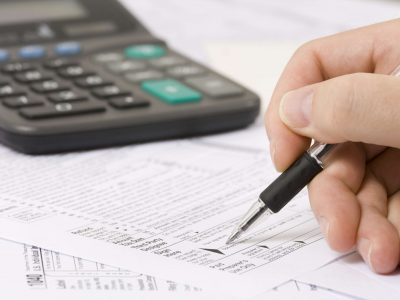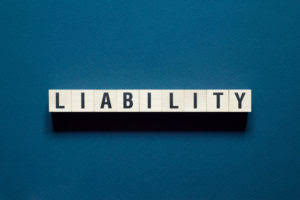
Depreciation rates used in the declining balance method could be 150%, 200% (double), or 250% of the straight-line rate. When the depreciation rate for the declining balance method is set as a multiple, doubling the straight-line rate, the declining balance method is effectively the double-declining balance method. Over the depreciation process, the double depreciation rate remains constant and is applied to the reducing book value each depreciation period. However, note that eventually, we must switch from using the double declining method of depreciation in order for the salvage value assumption to be met.

Income Statement
This method results in higher depreciation costs in the earlier years of an asset’s life, effectively matching the expense timing to the asset’s usage rate. After calculating the annual depreciation, the asset’s book value is updated by subtracting this expense from the beginning-of-year book value. Accumulated depreciation, the sum of all depreciation expenses to date, increases by the current year’s amount. In subsequent years, depreciation is calculated by applying the DDB rate to the reduced book value at the beginning of that year.
How To Calculate Depreciation With Double-Declining Method

For instance, if an asset has a life of five years, the sum of the years’ digits would be 15 (5+4+3+2+1). In the first year, you use 5/15 of the depreciable base, then 4/15 in the second year, and so on. Embrace Sourcetable’s intuitive, powerful platform for all your calculation needs and move towards a smarter, more accurate way of handling numbers.
Fundamentals of Depreciation
This method calculates the depreciation expense by multiplying the asset’s book value at the beginning of each period by the double declining balance rate. The double declining balance (DDB) depreciation method has a notable long-term impact on a company’s asset value and profitability. This accelerated depreciation technique allocates a higher depreciation expense in the initial years of an asset’s life, thus reducing its carrying value more rapidly compared to the straight-line method.

The basic difference between book and tax depreciation is the timing of calculations. The financial statements are prepared at the end of a financial period, and depreciation expense is calculated to deduct from the asset value. In contrast, the depreciation for tax purposes is calculated after the end of the financial period. Therefore, the time at which depreciation appears in the financial statement and tax return varies. The Double Declining Balance (DDB) method is an accelerated depreciation technique that depreciates an asset at Oil And Gas Accounting twice the rate of the straight-line method.
Applying the Double Declining Balance Method in Real-World Scenarios
- This guide offers a complete, step-by-step approach to accelerated asset cost allocation.
- On the income statement, DDB results in higher depreciation expense and lower net income in early years; later years show lower depreciation expense and higher net income.
- Therefore, the first year depreciation expense for the $10,000 machine would be equal to $4,000 (.40 X 10,000) — provided the asset was placed in service on January 1, of that year.
- It is also a general practice that the maintenance expenses are high in the later years.
- Let’s examine the steps that need to be taken to calculate this form of accelerated depreciation.
- The method’s accelerated depreciation schedule results in varying effects on income statements, balance sheets, and cash flow statements.
- If you’re brand new to the concept, open another tab and check out our complete guide to depreciation.
This involves reducing the value of plant, property, and equipment to match its use as well as its wear and tear over time. This involves accelerated depreciation and uses the Book Value at the beginning of each period, multiplied by a fixed Depreciation Rate. You can easily compute for this value using this double declining depreciation calculator, or you can compute it manually. Depreciation is the act of writing off an asset’s value over its expected useful life, and reporting it https://aandd.ru/analiticheskie-vesi/future-value-factor-of-a-single-sum-or-annuity/ on IRS Form 4562.
- Think of tech gadgets that seem to age in dog years, or heavy machinery that puts in the hard yards upfront; their book value should drop as quickly as their market value.
- It is frequently used to depreciate fixed assets more heavily in the early years, which allows the company to defer income taxes to later years.
- The asset’s cost represents the total amount spent to acquire and prepare it for its intended use.
- If the double-declining depreciation rate is 40%, the straight-line rate of depreciation shall be its half, i.e., 20%.
- Enter the purchase cost the property, not including the value of any land that came with it.
- However, it’s essential to note that tax authorities may have specific rules and guidelines for depreciation methods.
- He has been the CFO or controller of both small and medium sized companies and has run small businesses of his own.

Accelerated methods recognize a larger portion of an asset’s cost as an expense in its earlier years and progressively smaller amounts in later years. This contrasts with straight-line depreciation, which allocates an equal amount of expense each period. DDB is particularly suitable for assets that lose value rapidly or are more productive in their initial years. The double-declining balance (DDB) depreciation method, also known as the reducing balance method, is one of two common methods a business uses to account for the expense of a long-lived asset. Compared to the standard declining balance method, the double-declining method depreciates assets twice as quickly. However, it’s essential to note that tax authorities may have specific rules and guidelines for depreciation methods.
When Not to Use DDB
Before jumping into the concept how to calculate double declining balance itself, we will recall some concepts of depreciation to refresh memory. This blog will help you calculate depreciation using the double-declining method, examples, and why the double-declining method is beneficial for business entities. Since depreciation is a non-cash expense, it must be added back to the net income in the operating activities section to reflect the actual cash flow. Once the Straight-Line depreciation rate is calculated, it is doubled to obtain the Double Declining Balance Depreciation rate.
Is Accounts Receivable Considered Income? A Clear Explanation
Therefore, depreciation for Year 5 is limited to $2,960 ($12,960 – $10,000), bringing the ending book value precisely to the salvage value of $10,000. The DDB method is more complex to calculate and may not fully depreciate the asset over its useful life. Therefore, the first year depreciation expense for the $10,000 machine would be equal to $4,000 (.40 X 10,000) — provided the asset was placed in service on January 1, of that year. In that case, only the excess of the depreciable base may be expensed for that year. In fact, as the name suggests, the DDB method results in a first-year depreciation expense of double the amount that could be expensed using the straight-line method.

This method is particularly effective for assets like technology products that quickly become obsolete. To use the double declining balance in Excel, enter the DDB function with the appropriate arguments. Input the asset’s initial cost, salvage value, its estimated useful life, and the period for which you want to calculate depreciation. The function swiftly computes the depreciation expense for that period, reflecting the asset’s rapid value drop in the early stages. It’s a straightforward process that can be repeated for each year of the asset’s life to construct a complete depreciation schedule. The DDB function is used to calculate the depreciation of an asset for a specific period based on the double-declining balance method.